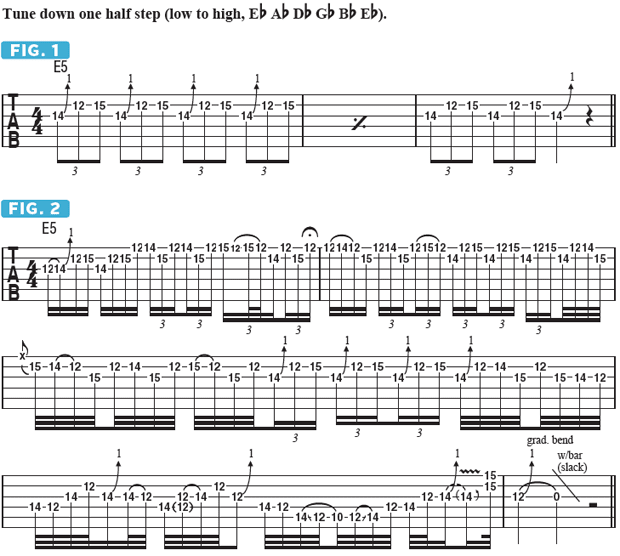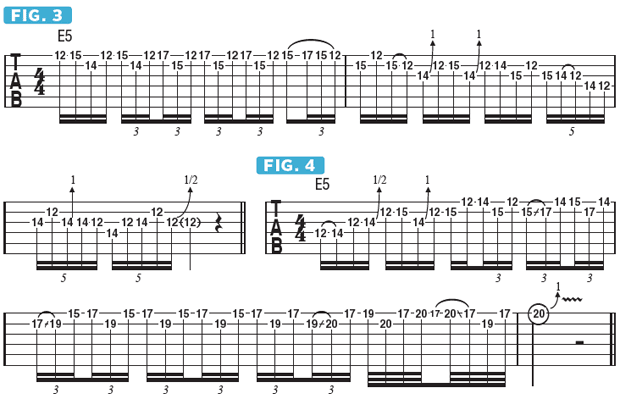
Using Repetition to Build Solo Lines
As a lead guitarist in a heavy metal band, when I solo I like to go for licks that are simple and repetitive and “drive the point home” as well as take the solo and song to another level.
The licks in this month’s column are designed to sound impressive while being relatively easy to play—which is important to me, because I’m drunk most of the time.
FIGURE 1 is a standard rock lick based on the E minor pentatonic scale (E G A B D) and a repeating, three-note, triplet idea, with a G-string bend followed by two notes on the B string. The next step is to build from this lick to make the solo more interesting.
In FIGURE 2, I start with the same basic shape, but by beat three I’ve moved the three-note idea over to the top two strings, and by beat four I’ve added a quick hammer/pull on the high E string. The initial simple three-note idea already sounds much more interesting and exciting.
In bar 2, I alternate 16th-note triplets that include a D note at the B string’s 15th fret and an F# at the 14th fret of the high E string with 16th-note triplets that invert the fingering, so that a C# note is played at the 14th fret of the B string along with a G note on the high E string’s 15th fret.
As I play this lick, I stick with my first three fingers throughout, switching the order in which the fingers fall on the fretboard in a kind of random way. This approach brings other scales into play, such as the E blues scale (E G A Bb B D) and the E Dorian mode (E F# G A B C# D). By the time I get to bar 4 of FIGURE 2, I switch over to licks based on E minor pentatonic, and, of course, I end with a big whammy bar dive after pulling off to the open G string.
FIGURE 3 offers another example of how to reach up to some different notes, such as the high A at the 17th fret on the high E string. Changing these shapes ever so slightly results in licks that sound very different from one another.
In FIGURE 4, I begin with the same basic idea as before, but starting on beat four of bar 1 I incorporate a repeated motive: while staying within the structure of E Aeolian (E F# G A B C D), I follow an ascending note slide on the B string with two consecutive scale tones on the high E and repeatedly move up the neck through various scale positions. This technique gives the solo a lot of forward motion and sounds great, especially if you end with a big-ass high-bend vibrato, like I do.


Source: www.guitarworld.com











